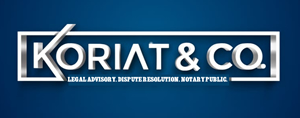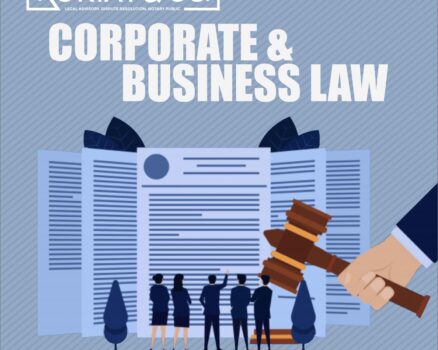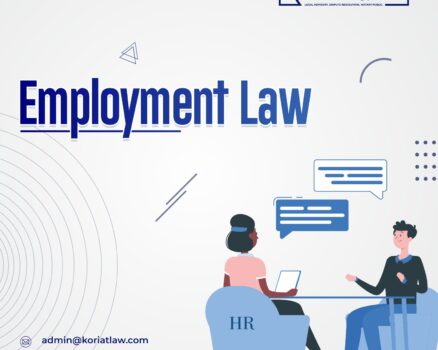 In order to simplify the Nigeria’s credit system and improve access to finance for entrepreneurs and micro enterprises, the Federal Government of Nigeria enacted the Secured Transaction in Movable Assets Act in 2017. The Act applies to all security interests in movable assets created by an agreement in any form, whether denominated as a charge instrument, lien, sale agreement with retention of title, etc., between the debtor and secured creditor. Since then, almost all the Deposit Money Banks, Microfinance Banks, Primary Mortgage Institutions, Development Finance Institutions and Non-Bank Financial Institutions have been accredited with the National Collateral Registry (NCR) as institutional credit providers to MSMEs.
In order to simplify the Nigeria’s credit system and improve access to finance for entrepreneurs and micro enterprises, the Federal Government of Nigeria enacted the Secured Transaction in Movable Assets Act in 2017. The Act applies to all security interests in movable assets created by an agreement in any form, whether denominated as a charge instrument, lien, sale agreement with retention of title, etc., between the debtor and secured creditor. Since then, almost all the Deposit Money Banks, Microfinance Banks, Primary Mortgage Institutions, Development Finance Institutions and Non-Bank Financial Institutions have been accredited with the National Collateral Registry (NCR) as institutional credit providers to MSMEs.
A loan transaction is only deemed to be perfected upon registration of the security interest in the movable assets used as collateral for the loan. The registration of security interest in a movable asset is done by registering a financing statement with the NCR. The registration of security interest is a notice to third parties and gives priority right to the secured creditor over any third party’s right in the registered collateral.
REGISTRATION OF A FINANCING STATEMENT
Financing Statement is one of the most important aspects of the registration of security interest in a movable asset as collateral with the NCR. It is a prescribed online form on which information about the loan, the creditor, debtor and collateral is to be provided by the secured creditors or their lawyers to effect, amend, cancel or continue a registration of collateral under the Collateral Registry Regulation. The procedural process of registering a financing statement is explained below:
1. Login into the NCR online platform with your “Login id” and “Password”. [Users of organizations must do so as Client or Financing Statement Officers].
2. Click on the “Financing Statement” Menu and select “Create New Financing Statement” option from the drop down bar.
3. Provide relevant information for the fields on the “Loan Information” form. This is better explained under “How to Prepare a Financing Statement” below.
4. Click on the “Secured Party” tab under the “Registration Information” column to display the “Secured Party” profile details captured during the account setup stage. Please note that every institutional moneylender must be registered with the NCR before it can register a security interest in a collateral with the NCR.
5. To enter additional Secured Party details, click on the appropriate button on the form and provide information for the fields.
6. Click on the “Debtor” and “Collateral” tabs to fill the forms. Make sure information for all mandatory fields are provided.
7. Click on the “Add File” button to attach a file document (usually the loan agreement and or the security agreement) in Word or PDF formats to the financing statement and then click on the “Upload” button to upload the file attachment. Please note the size limit of the document that can be uploaded and reduce same where necessary.
8. To request for stamp duty exempt click inside the Stamp Duty Exempt box and provide your comments in the Comment box.
9. Click inside the Acknowledgement box and then Click “Submit Financing Statement” to submit financing statement for authorization.
HOW TO PREPARE A FINANCING STATEMENT
Preparation of Financing Statement is very simple but requires some experience and understanding of the classifications of the assets to be used as collateral and how to group them. This should be done with proper guidance of a lawyer because certain errors in the financing statement may render the registration ineffective. The NCR is excused from liability arising from any errors in the registration of financing statement as shown in the following exclusion clause:
“The Collateral Registry is not responsible for changes, omissions, or corruption of electronically transmitted information, which occurred prior to receipt of the financing statement. It is neither responsible for scrutinizing or verifying information contained in the financing statement. The information is simply entered into the Collateral Registry as received in the financing statement. The secured creditor remains responsible for the accuracy and legality of the information. Where the Collateral Registry wrongly transcripts information in the financing statement into the Collateral Registry system, or provides incorrect information arising from such error, and a person suffers a loss or damage, the Collateral Registry will be responsible.”
Financing Statement can be created by any of the relevant registered users in the workflow on the NCR dashboard, namely: the Administrator, Financing Statement Officer, Financing Statement Authorizer, Amend Officer, Amend Authorizer, Update Officer and Update Authorizer. In order to protect the integrity of the registration process and allow opportunity for checks and balances, it is advised that the same person should not exercise the tasks of creating a Financing Statement and that of authorizing a Financing Statement. The tasks should be split between the solicitor and the secured creditor’s designated staff.
The Financing Statement is divided into two segments: the Loan Information and the Registration Information. The Registration Information segment is further subdivided into three columns: Secured Creditor, Debtor and Collateral columns. There essential parts of Financing Statement are discussed below:
i. Loan Information Segment: This part entails the loan type, the loan due date, the currency of transaction, the collateral registration expiry date, the total or maximum amount covered by the loan agreement. The loan types are consumer loan, personal loan, commercial loan, line of credit, facility and agricultural loan –all listed in a drop-down bar on the Loan Type section of the column. The loan due date is in accordance with the loan agreement but the collateral registration expiry date is usually beyond the loan due date and can be extended if the outstanding amount has not been fully paid at the due date or there is a commitment for future advances. For instance, if a debtor agrees to pay up a loan by 30th June 2020, the collateral registration expiry date usually should be 6 months beyond, namely, 31st December 2020, to give room for possibility of default and time to update the Financing Statement to extend the collateral registration expiry date. Care must be taken to ensure that accurate information about the loan amount is recorded in the Financing Statement and to extend the collateral expiry date in advance to avoid losing the creditor’s priority right of enforcement. Please note that section 23 of the Secured Transaction in Movable Asset Act 2017 provides that priority between perfected security interests in the same collateral shall be determined by the order of registration.
ii. Secured Creditor Column: This column relates to the details of the secured creditor, which must be properly described using its incorporated names, registered or business address. Secured creditor is an institutional moneylender with relevant operational license. Secured creditors are categorized as follows: Deposit Money Banks, Microfinance Banks, Primary Mortgage Institutions, Development Finance Institutions and Non-Bank Financial Institutions. For the purpose of registration of collateral with the NCR, an unlicensed moneylender cannot be registered as a secured creditor. To be registered as a Secured Creditor, a lender must have been pre-accredited by the NCR to which relevant incorporation documents and operational licenses must have been submitted. Please note that a lender may be a company registered in Nigeria or outside Nigeria.
iii. Debtor: This column is to document the debtor’s name, contact or business address, and sector of business or intended business. There are individual debtor and institutional debtor. The requirements for both debtors are largely similar except that an individual debtor will be need to provide his or her Bank Verification Number (BVN) for registration of the Financing Statement and if the debtor is foreigner, the debtor’s passport is required. But for an institutional debtor, the additional requirements include the Business Registration Number (e.g. RC, BN, COOP. No., IT No.), the Debtor Type (e.g. Micro Business, Small Business, Medium Business and Large Business). It is important to state the relationship of the debtor as either new borrower or existing borrower. Also, it is important to mention that the owner of an asset is the right person who can give it out as security for a loan. Where a person grants a security interest in his or her assets to secure a loan taken by someone else, the former must execute a security agreement as if he or she is the one obtaining the loan and will be treated as the borrower accordingly.
iv. Collateral Column: This is the part of the NCR platform for registering a financing statement that requires the utmost care and experience. This column entails the Collateral Types, the Serial Number of the collateral (which is mandatory for motor vehicles, planes, boats, plant and machinery except those held to be inventory or consumer/household goods under section 15 of the Act) and the Description of the collateral. Please note that only movable assets can be registered as collateral with the NCR. The NCR does not register real or immovable property, which is covered under the various real property laws and various States’ land registries. Movable assets are defined by section 63 (1) of the Secured Transactions in Movable Assets Act, 2017 to mean tangible or intangible property other than real property. Collateral can be present or future assets. In the Collateral Column, the Collateral Types is a clickable drop-down bar listing, in alphabetical order, the categories of movable assets that can be registered with the NCR as follows:
– Accessions,
– Accounts Receivable/other Rights to Payment,
– All Assets,
– Boats,
– Consumer/Household Goods are assets like household appliances, furniture, a personal computer, laptop, etc.
– Deposit Accounts: refers to the right of payment that a debtor may have for providing services or selling goods. For instance, if the debtor has a store that often sells goods on credit to customers that retain an account with her/him, and that is billed at the end of the month. These outstanding payments are accounts receivable and may be used as collateral. The debtor will not have to wait for 30 or so days to collect payments from his/her customers, but instead may get money immediately from a secured creditor using those accounts receivable as collateral.
– Documents of Title/Negotiable Instruments,
– Electronics (Television, Refrigerator, Projector),
– Equipment: Equipment refers to any goods that are not inventory or consumer goods. The Collateral Registry Regulation defines it to mean machinery or other capital goods used in the operation of the debtor’s business. Equipment includes assets like farm equipment, large machinery, cash registers, taxi and computers used by a business.
– Farm Products, include crops (growing, grown, or to be grown), fish stocks, poultry and livestock (and their unborn offspring), seeds, fertilizers, manure, and other supplies used or produced in a farming operation. This collateral type also includes products of crops and livestock in their unprocessed states.
– Fixtures,
– Intellectual Property, including patents, trademark, copyright, etc.
– Inventory: This refers to goods that the debtor maintains for sale or lease in the ordinary course of business, such as tables and chairs in a furniture store. Inventory also includes raw materials or work in progress.
– Jewelry, such as wristwatches, necklaces, hand and leg chains, waist beads, etc.
– Minerals, including oil and gas or minerals that have been extracted.
– Money, means cash at hand or in bank whether in Naira or other currencies.
– Motorcycle,
– Motor Vehicle, including buses and trucks.
– Other Intangibles, such as lien, insurance benefits, etc.
– Planes, including any flying vessels.
– Plants and Machinery,
– Securities,
– Timber.
Please note that where a particular movable asset used as collateral does not find a suitable category in the column, it is advisable to list it under the All Assets column. If proceeds are not of any kind covered in the proceeds described in the Financing Statement or money, accounts receivables, negotiable instruments or bank accounts, an amendment to the initial financing statement can be registered under section 9 (2) of the Secured Transactions in Movable Assets Act, 2017 to describe the new assets within 15 days after they arose.
Please note also that vehicles, as well as other assets, have differing classifications depending on their use. Family and personal vehicles are considered to be consumer goods. On the other hand, delivery vehicles such as trucks, pick-ups, taxis, transport buses etc. are considered to be equipment. Finally, vehicles for sale in a car lot are deemed to be inventory.
HOW TO AUTHORIZE A FINANCING STATEMENT
After the creation of a financing statement by a Financing Statement Officer, it then needs to be authorized by a Financing Statement Authorizer. As already stated above, two separate persons should perform the tasks to ensure checks and balances. The task of the Authorizer is pretty simple: vet and approve. The steps are as follows:
1. Login to the NCR online application with your “Login id” and “Password” as a Client Authorizer. This brings you to the dashboard.
2. Click on “My Tasks” Menu top left corner to drop down the bar and select “My Pending Tasks” from the drop down bar.
3. Click on the “Handle” button of the financing statement of interest.
4. This opens the “Handle Task” page to review registration details. Review the details to be sure that vital information is not omitted.
5. Scroll down to the Authorization section. Select “Authorize” to approve, “Deny” to terminate or “Resend to Submitter” to return to the Submitter for correction and resubmission.
6. Click the “Submit” button when satisfied with the contents of the financing statement to conclude the registration of security interest.
CANCELLATION OF A FINANCING STATEMENT
Pursuant to section 211 of the Secured Transaction in Movable Asset Act 2017, a creditor may cancel a financing statement upon the filing of a Cancellation Statement within 15 working days of receiving a request for cancellation from the Grantor or the Borrower provided that—
(a) all obligations under the security agreement have been performed; and
(b) there is no commitment to make future advances.
The Cancellation Statement shall include the following:
(a) the registration number of the initial financing statement to which the Cancellation Statement relates;
(b) identification of the Creditor authorizing the cancellation; and
(c) such other information as may be prescribed by Regulations.
Where a creditor fails to comply with the request of a borrower to file a cancellation statement, the borrower may appeal under Section 21(4) of the Act to the Registrar of the NCR showing cause why the registered Financing Statement should be cancelled. The notice of the borrower’s appeal shall be given to the creditor who shall have a right under Section 21(6) to respond within 7 days of receipt. The decision of the Registrar on the request for cancellation shall be final and he shall give effect to his decision. See Section 21(7).
COST OF REGISTERING A FINANCING STATEMENT
Section 57 of the Secured Transaction in Movable Asset Act 2017 empowers the Registrar of the NCR to fix, impose and review such fees and other charges for service of the Registry as may be specified by regulations made under the Act. All registered users of the online platform of the NCR are expected to have a postpaid account from which all registration costs can be automatically deducted. In the absence of a postpaid account, all charges must be prepaid. Users pay a one-off fee for occasional use or a subscription fee for continuous use. The fees structure provided in Regulation 22 of the Collateral Registry Regulations 2015 is shown below:
FEES
Initial Registration is ₦ 1,000.00; Renewal/Amendment is ₦ 500.00; and Searches And Search Certificates is ₦ 500.00
The above fees may be reviewed from time to time by the Registrar of the NCR.




